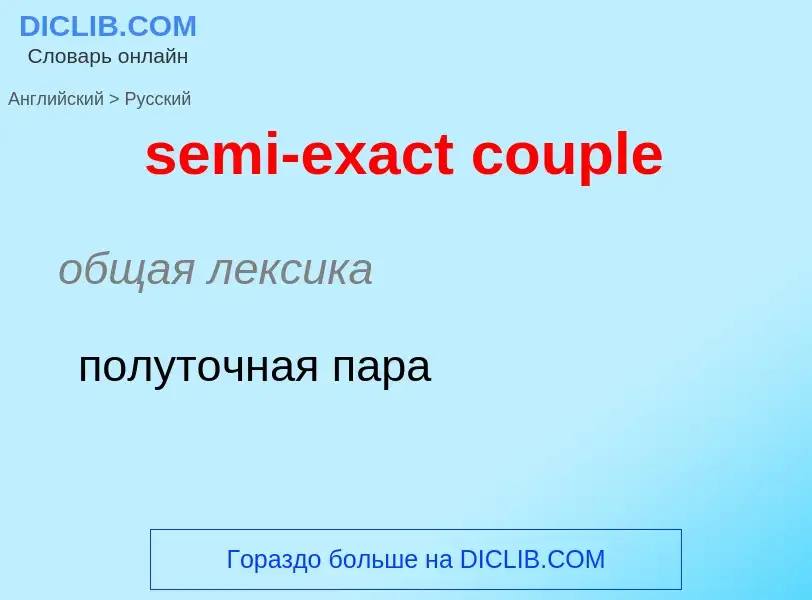Перевод и анализ слов искусственным интеллектом ChatGPT
На этой странице Вы можете получить подробный анализ слова или словосочетания, произведенный с помощью лучшей на сегодняшний день технологии искусственного интеллекта:
- как употребляется слово
- частота употребления
- используется оно чаще в устной или письменной речи
- варианты перевода слова
- примеры употребления (несколько фраз с переводом)
- этимология
semi-exact couple - перевод на русский
общая лексика
полуточная пара
общая лексика
пара сил
[ig'zækt'saiənsiz]
общая лексика
точные науки
Определение
Википедия
In the mathematical field of combinatorics, given a collection S of subsets of a set X, an exact cover is a subcollection S* of S such that each element in X is contained in exactly one subset in S*. In other words, S* is a partition of X consisting of subsets contained in S. One says that each element in X is covered by exactly one subset in S*. An exact cover is a kind of cover.
In computer science, the exact cover problem is a decision problem to determine if an exact cover exists. The exact cover problem is NP-complete and is one of Karp's 21 NP-complete problems. It is NP-complete even when each subset in S contains exactly three elements; this restricted problem is known as exact cover by 3-sets, often abbreviated X3C. The exact cover problem is a kind of constraint satisfaction problem.
An exact cover problem can be represented by an incidence matrix or a bipartite graph.
Knuth's Algorithm X is an algorithm that finds all solutions to an exact cover problem. DLX is the name given to Algorithm X when it is implemented efficiently using Donald Knuth's Dancing Links technique on a computer.
The standard exact cover problem can be generalized slightly to involve not only "exactly one" constraints but also "at-most-one" constraints.
Finding Pentomino tilings and solving Sudoku are noteworthy examples of exact cover problems. The n queens problem is a slightly generalized exact cover problem.


